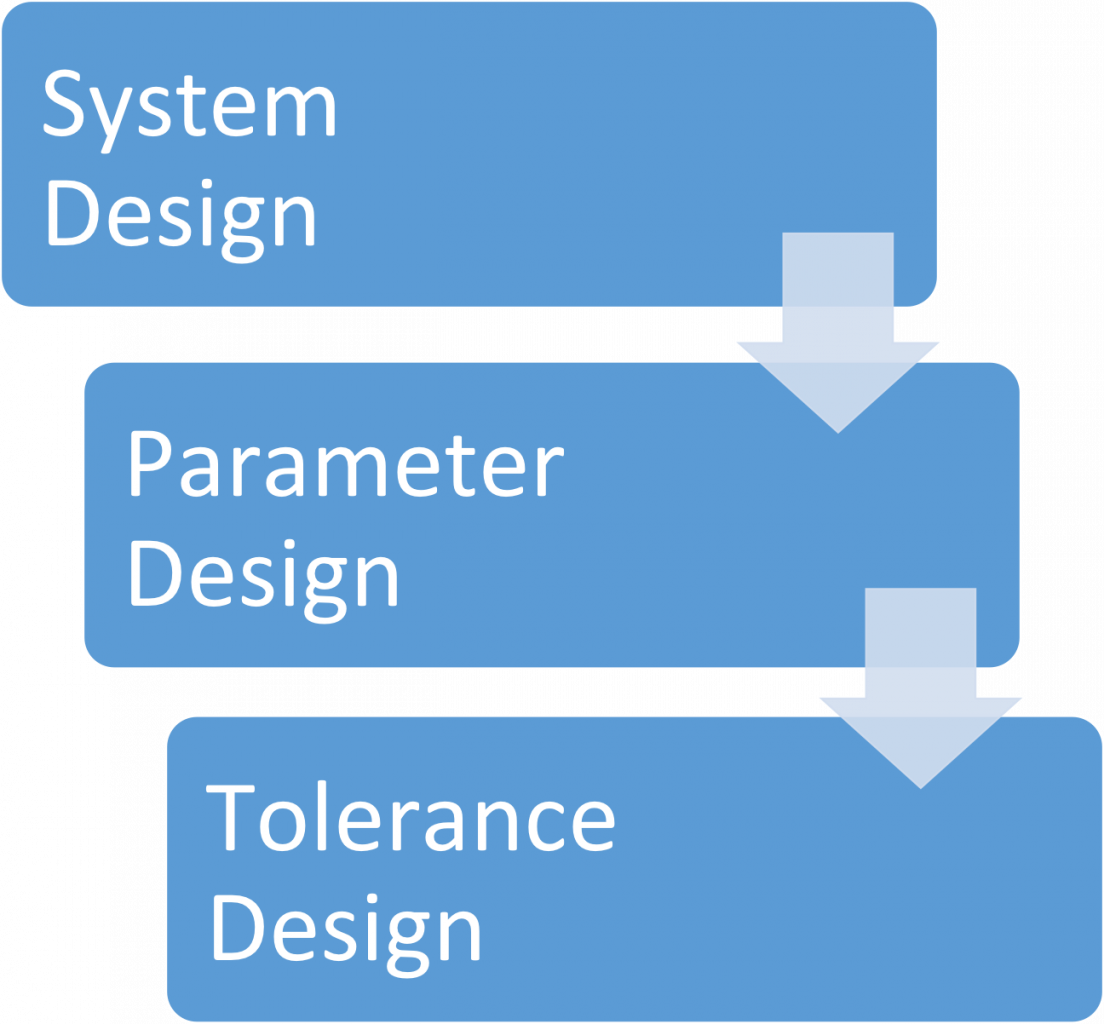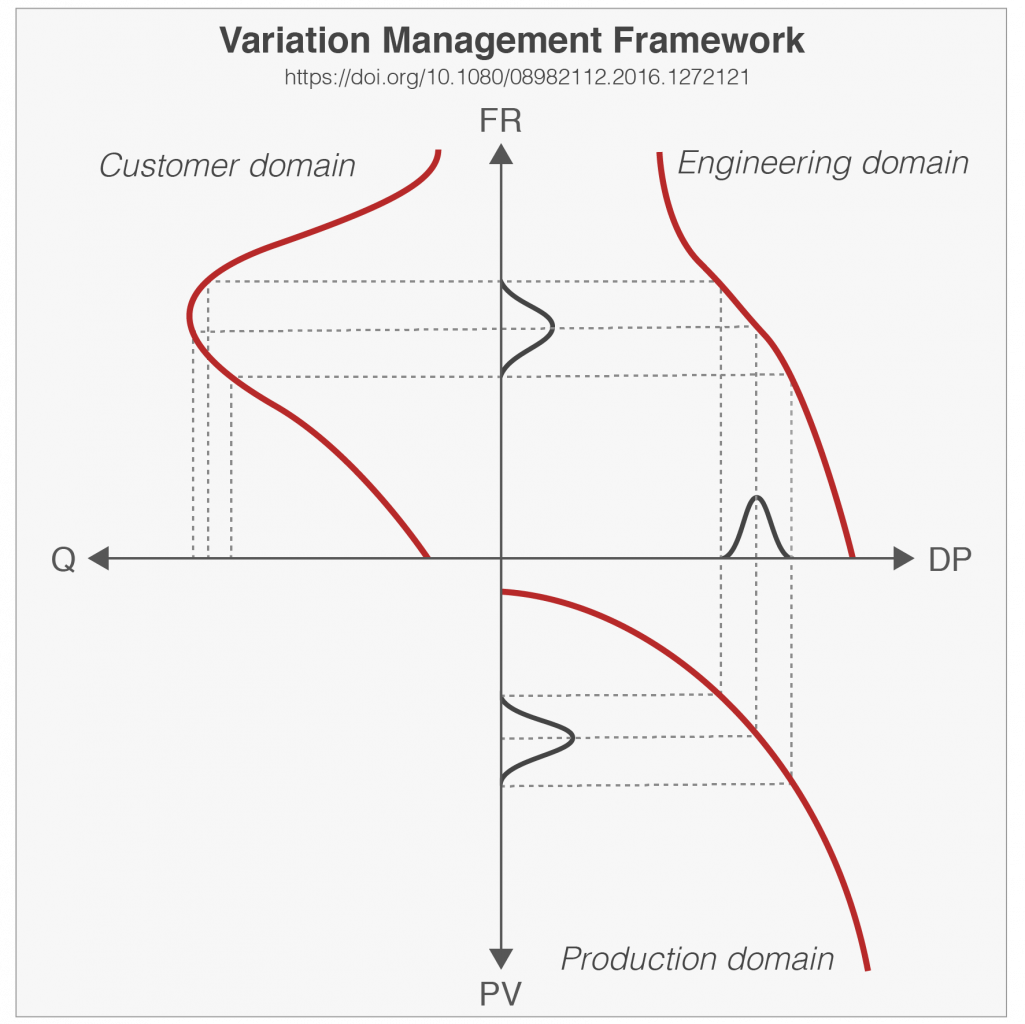Robust Design Methodology
 Originating from Taguchi’s Quality Engineering Framework, Robust Design aims at the design of products, that are insensitive to different sources of variation (e.g. manufacturing/ assembly variation, ambient use conditions, varying load scenarios, etc.). At the same time, traditional Robust Design is largely based on parametric descriptions by means of experimentation and statistical analyses (PARAMETER DESIGN phase) and has been often criticized for not offering enough guidance and support in early phases of development.
Originating from Taguchi’s Quality Engineering Framework, Robust Design aims at the design of products, that are insensitive to different sources of variation (e.g. manufacturing/ assembly variation, ambient use conditions, varying load scenarios, etc.). At the same time, traditional Robust Design is largely based on parametric descriptions by means of experimentation and statistical analyses (PARAMETER DESIGN phase) and has been often criticized for not offering enough guidance and support in early phases of development.
In a new direction, the SIG aims at a Robust Design Methodology which brings Robust Design thinking into earlier stages of development and is applicable across different domains. Interesting areas are more pragmatic tools applicable in short iteration cycles of early design stages (SYSTEM DESIGN), the influences of design approaches on detailed sensitivity studies, Tolerance Design, Quality Perception as well as Perceptual Robustness, and so forth. This is shown exemplarily by the Variation Management Framework (VMF) on the left which illustrates how variation from the PRODUCTION DOMAIN is propagated through the ENGINEERING DOMAIN towards the CUSTOMER DOMAIN. Put differently, how to combine methods and tools from the different domains in an interdisciplinary approach that ensures the optimal/ most robust solution.
HOW TO ENGAGE?
Contact us to learn how to engage in the Robust Design SIG.

